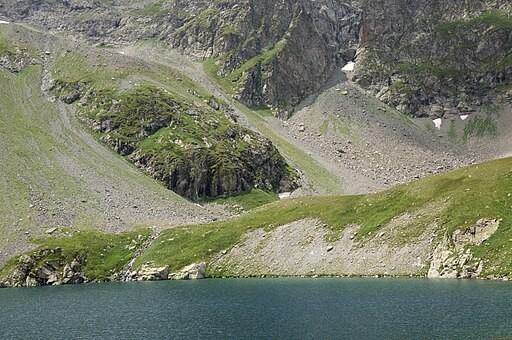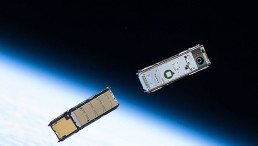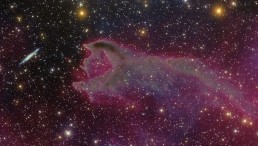Lake Karachay in Russia may look serene and picturesque, but it hides a dark and deadly secret. It is considered the most radioactive lake on Earth.

What Happened to Lake Karachay?
Lake Karachay is a small lake located in the Chelyabinsk region in the southern Ural mountains of central Russia, close to the modern Kazakhstan border. This body of water falls within the Mayak Production Association, one of Russia's largest and leakiest nuclear facilities.
Immediately after World War II, Mayak was built as one of the country's most important nuclear weapons factories. The facility was inaccessible to foreigners for 45 years but was opened when President Boris Yeltsin signed a decree in 1992. After that, Lake Karachay was immediately declared the most polluted place on the planet by visiting scientists who gained access to the area.
It was assumed that during its long period of obscurity, Mayak had been a site of numerous nuclear-related accidents, some almost as destructive as the Chernobyl meltdown. When the existence of the facility was finally acknowledged, the Chelyabinsk region had reported a 21% increase in cancer, a 25% increase in congenital disabilities, and a 41% increase in leukemia.
Apparently, nuclear engineers at Mayak dumped radioactive waste into the nearby Techa River. The watered down waste they carelessly discarded was a combination of radioactive elements like Cesium-137 and Strontium-90, each with a half-life of almost 30 years.
Techa River became so contaminated that up to 65% of the population in Metlino village suffered from sickness brought by radiation. By the mid-fifties, the engineers finally decided to stop dumping nuclear waste into the nearby lakes. Instead, they decided to pump the waste into a row of vats. In September 1957, the vats exploded and spewed tons of radioactive waste, which affected the food supply of nearly 300,000 citizens.
With the destruction of the waste system, Mayak engineers started to direct their constant flow of radioactive effluent into Lake Karachay. The engineers were optimistic that anything dumped in this lake would remain permanently since it had no surface outlets.
These assumptions proved to be true for ten years, after which a drought struck Chelyabinsk. As the lake slowly began to dry up, it exposed the radioactive sediment at the bottom. Experts have estimated that approximately one billion gallons of groundwater have been contaminated with radioactive waste.
READ ALSO: 4 Most Radioactive Places In The World: Where Are They Located?
How Much Radiation Is Present in Lake Karachay?
Approximately 0.6 square miles (1.5 square kilometers), Lake Karachay receives radioactive discharges every year. It is believed that the bottom of the lake contains radioactive waste in deeper layers of sediment up to 11 feet (3.4 meters) deep.
Over the years, the lake accumulated so many dangerous substances that its water emitted more than 120 million Ci of radionuclides, more than twice the amount emitted into the air by the Chernobyl nuclear disaster.
The lake is so radioactive that it can be detected by satellites that orbit the Earth. Just standing next to this lake for an hour would give you a radiation dose of 600 roentgen, which is enough to kill a person.
RELATED ARTICLE: US Nuclear Assets Could Be Leaking Radioactive Substances Into The Sea
Check out more news and information on Radioactive Waste in Science Times.



![Anger Could Lead to Blood Vessel Dysfunction, Increase Risk of Heart Problems [Study]](https://1721181113.rsc.cdn77.org/data/thumbs/full/53500/89/56/50/40/anger-could-lead-to-blood-vessel-dysfunction-increase-risk-of-heart-problems-study.jpg)









![Venus Lost Water and Dried Out Due to Chemical Reaction HCO+ Dissociative Recombination [Study]](https://1721181113.rsc.cdn77.org/data/thumbs/full/53493/258/146/50/40/venus-lost-water-and-dried-out-due-to-chemical-reaction-hco-dissociative-recombination-study.jpeg)
